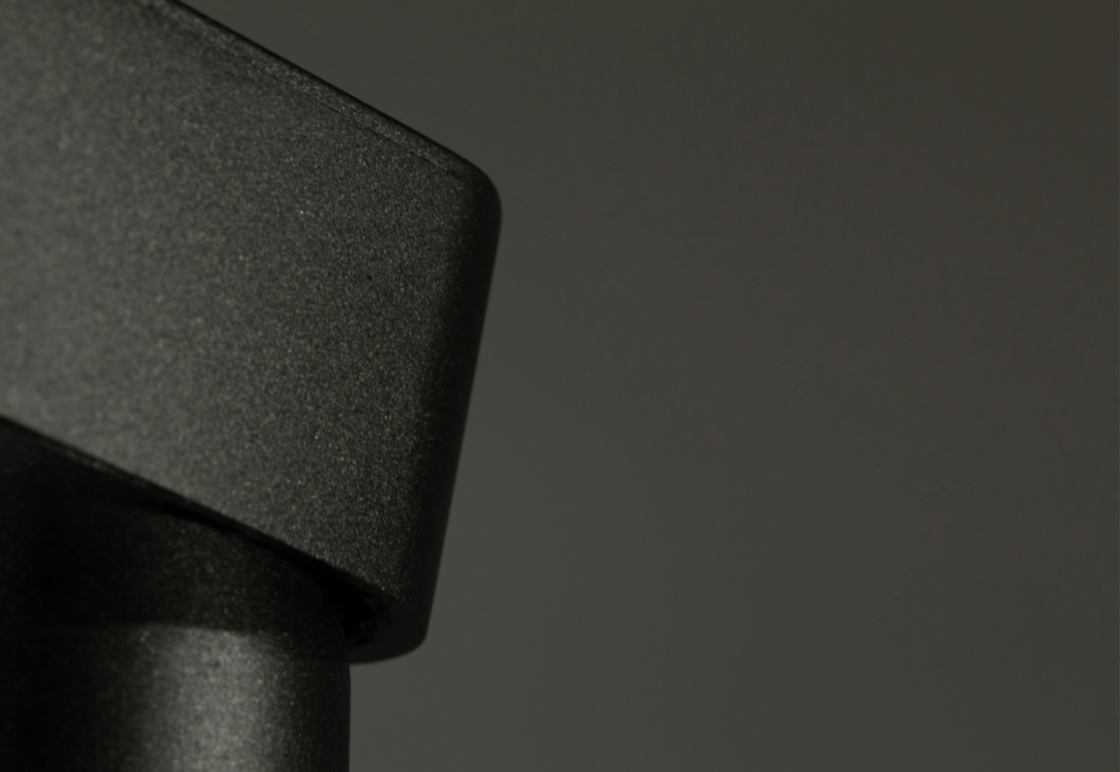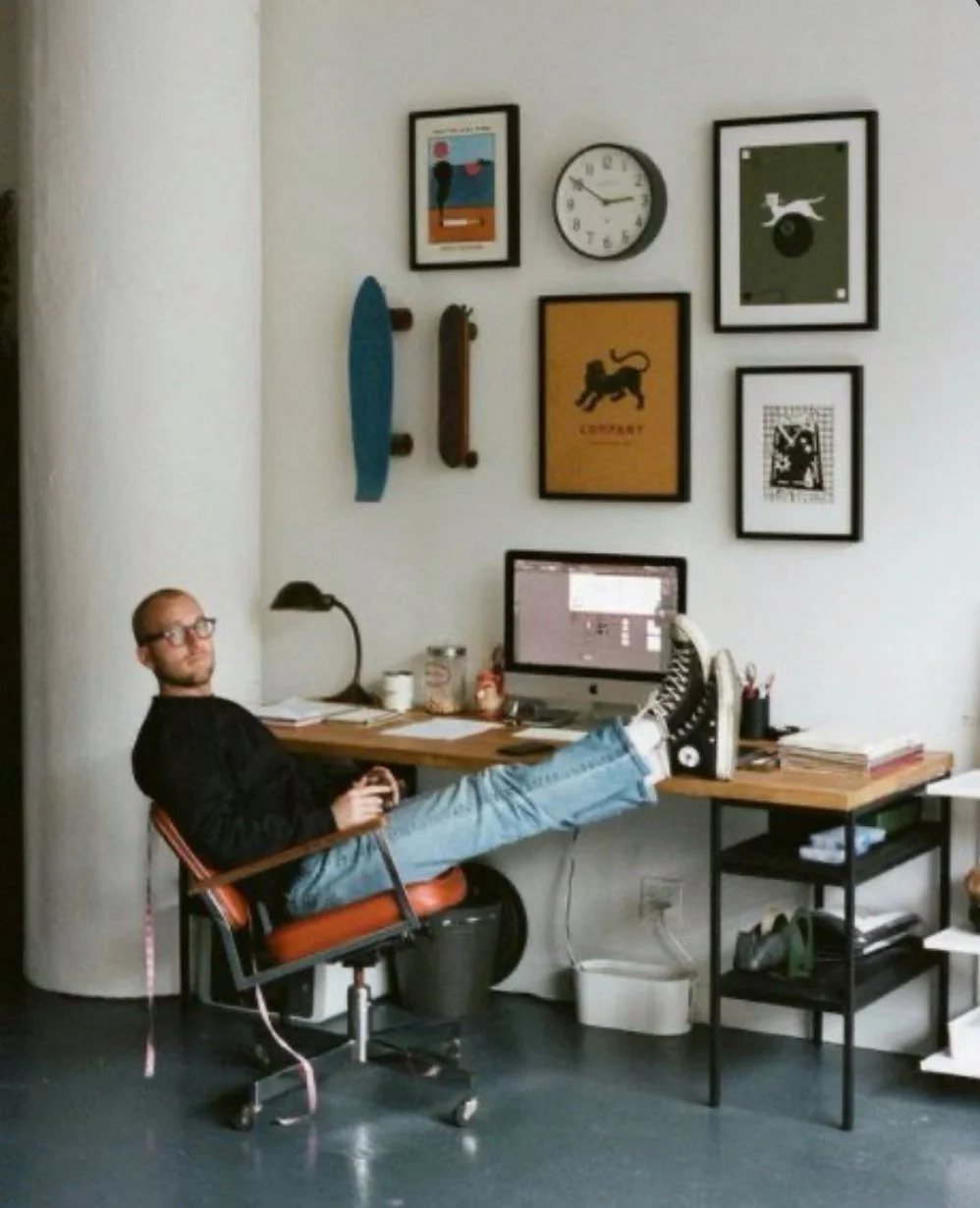
Where Form Becomes Atmosphere
The TLamp embraces modern minimalism through a vase-inspired base and a curved cylindrical shade. Both elements are finished with metallic-textured spray paint, simulating the look of sandblasting recycled aluminum while remaining lightweight and cost-effective. Thoughtful details— like a stainless steel rotary dimmer and precision-crafted internal components— add functional elegance to the design.
Engineered for optimal light diffusion, the curved shade softens and reflects the LED output, creating a warm, ambient glow without harsh glare. A front-facing rotary dimmer enables intuitive control over brightness, allowing users to seamlessly adjust the lighting to any environment.
Product
Table Light
Material
Sandblasted Recycled Aluminum, Stainless Steel Dial, GU10 Bulb
Space
Private Spaces: Bedroom Desks Public Spaces: Restaurant Front Desk
User
Designed for those who value ambient, glare-free illumination in both private and shared spaces.
Form & Aesthetics
Keywords: Streamlined, Sleek, Smooth, Curved, Geometric, Balanced
Concept: A harmonious blend of organic curves and geometric forms, evoking movement and balance. It has a focus on fluidity and elegance, creating a visual rhythm that feels both timeless and contemporary.
Angles
Keywords: Defined, Bold, Modern, Minimal, Subtle Play
Concept: The interplay of clean, defined angles creates a striking visual tension by light patterns and shadows.
Ambiance
Keywords: Cozy, Intimate, Calming, Restorative, Warm Glow, Intuitive
Concept: A fusion of adjustable lighting and ambient design allows users to craft the perfect environment. With intuitive control over brightness, the atmosphere can shift from soft, cozy warmth to vibrant energy. This personalized lighting enhances the surrounding space, creating an atmosphere that is always in tune with the user’s needs.
Atmospheric Minimalists
Ages 25-40 | Design Conscious Urbanites | Curators of Calm
Modern creatives, architects, and professionals who seek serenity in form and function. They live in thoughtfully curated interiors where minimalism meets modernism. They crave a glare-free glow that supports their rituals: working, winding down, entertaining.
Values: Simplicity, Ambiance, Material Sensitivity, Adaptability
Mood: Calm, Intentional, Sensory-Driven
Color Material Finish
Color Material Finish
Color
Dark, Deep, Rich
Warm, earthy tones evoke intimacy and relaxation. This palette complements the soft glow of light, creating balance while enhancing the cozy atmospheric mood of the space.
Material
Recycled Aluminum
A sustainable, low-impact option that retains durability while reducing energy use and carbon emissions. Recycled aluminum requires just 5% of the energy needed to produce virgin aluminum, conserving resources and minimizing environmental harm.
Finish
Sandblasted
Provides a modern, raw, and tactile surface. The sandblasted finish softens reflections, offering anti-glare properties while reinforcing the piece’s industrial yet timeless aesthetic.
Brainstorming
I explored an interactive folding mechanism that replaces the traditional on/off switch. The Idea: When the shade folds down, the light dims or turns off, creating a soft, ambient glow and deeper shadows. As it’s lifted, it brightens, intuitively adjusting to the user’s needs while adding a dynamic and tactile element to the design.
As I refined the concept, I shifted towards a simpler yet sculptural approach: a fixed-angle shade that creates visual balance without requiring movement.
Balance: How can a hollow shade balance on the base?
Mechanics: Is a hinge or internal support needed to hold the angle?
Light Placement: Where should the bulb sit? Recessed or flush?
Controls: How can the dial be universal in function and placement?
Functionality: Can the dial turn on/off and dim the light?
Key Design Questions
Behind the Build
From early prototyping and structural testing to refining materials, wiring the dimmer, and perfecting surface finishes, each step involved hands-on experimentation, adjusting forms, and fine-tuning details to achieve a lamp that balances function, interaction, and sculptural presence.
Explored low to medium-fidelity prototyping while learning to wire a dimmable lamp using a rotary switch and GU10 bulb system.
This phase helped refine the form and functionality, creating a more intuitive and cohesive design.
Started by cutting a 7-inch PVC tube and positioning the dimmer dial using paper mock-ups for accurate placement.
For the tapered neck, I shaped a 2-inch-high maple block with a band saw and disc sander to achieve a taper. After sanding and priming, I matched the texture between the wood and PVC base to ensure a smooth, consistent finish.
The shade was constructed using styrene sheets and PVC arcs.
Challenge
Focused on material consistency by refining the wood through sanding and priming, achieving a seamless match to the PVC’s smooth plastic-like texture, and creating a unified final look.
Carefully structured the internal components to ensure precise knob rotation and stable wiring, preventing unwanted lateral movement. Designed custom supports to securely lock the bulb and switch mechanism in place, aligning the light source flush with the neck for a clean finish.
Internal support structure to securely hold the bulb and hardware in place.
Masked the dial, bulb, and cord before final priming and finishing.
Tested multiple shade angles that best balanced light diffusion and glare reduction.
I designed a connection joint to unify the shade and base into a cohesive structure. By experimenting with different shapes and lengths, I identified the balance points and tested the support needed to hold both components securely.
Using a finger brake, I bent various angles and ultimately found that my original design provided the best performance. Epoxy glue and screws were used to lock the parts in place.
I cut styrene samples and replicated the same priming and metallic finishing process used on the lamp. I tested between a dark space gray and light silver gray, evaluating texture and color. The result closely resembled sandblasted aluminum, helping guide my final color choice.
Technical Sketches
Sketching and calculating to resolve balance points, dimensions, and construction details.
CAD
Where Craft Meets Design
Photographed to reveal texture, materiality, and hand-crafted details of the physical prototype.



































